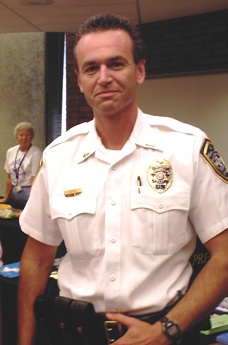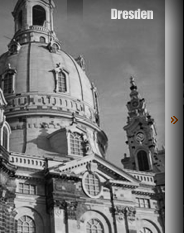The Destruction and Withholding of Evidence
In the same way that the 9/11 relatives have been denied access to the evidence of the "crime of the century," the destruction and withholding of evidence has been the main obstacle for the defense of Christopher Bollyn, independent journalist and 9/11 researcher.
* * *
The intentional withholding and destruction of crucial evidence from the terror attacks of 9/11 has been the main obstacle to discovery for the 6,600 plaintiffs who brought lawsuits against the airlines, the passenger screening companies, and others. The denial of access to evidence is clearly obstructing the pursuit of justice for the 9/11 relatives and victims.
http://www.rumormillnews.com/cgi-bin/archive.cgi?read=87695
Ellen Mariani, the first 9/11 relative to file a lawsuit against United Airlines for the wrongful death of her husband, is still demanding a jury trial. "You can't have a trial without evidence," Mariani says.
It is discouraging to see how this is done in cases large and small. The withholding of evidence has become the main obstacle I have encountered in preparing my defense.
In my misdemeanor case, the Hoffman Estates Police Dept. (HEPD) has destroyed the video evidence of the incident. HEPD is also withholding the most important parts (more than 75 percent) of the audio tape of the police transmissions and has provided false evidence of the body armor vests the undercover unit was wearing when it came to my house.
When the state's case against me began, a supporter wrote: "The side which gets the most evidence excluded wins."
FALSE EVIDENCE
When three unidentified men wearing body armor marched up my driveway last August 15, I was shocked and realized something had gone terribly wrong with my 911 call.
I had been very concerned about a suspicious vehicle with three armed men that I had seen prowling around my house for two evenings in a row and called the police to report it. I thought the armed men posed a danger to me and my family.
While I had expected a uniformed police officer with a normal police car to respond, the same suspicious vehicle I feared had unexpectedly returned.
I saw my wife, Helje, and our 8-year-old daughter talking to them on the driveway. Helje was frightened but had enough sense to ask them who they were and what they wanted. The men, who were wearing blue jeans and navy blue body armor, had not even said "Hello" or explained that they were responding to my 911 call.
Seeing three armed men confronting my wife and child was a sign of imminent danger. I had never been in such a situation before and although I was very alarmed, I rushed out of the house to assist them.
"Who are you, and why are you threatening our neighborhood?" I asked them. The men did not explain who they were or their business on my property and did nothing to de-escalate the situation.
I was dismayed by their aggressive demeanor and went to summon my brother as an extra witness.
Contrary to the police report, their dark blue body armor carried no insignia or badges which identified them as police. The men were working undercover according to Lt. Richard Russo, spokesman for the HEPD, the author of the press release of August 16, 2006.
The HEPD Media Information Release Form started its description of the incident as follows: "Undercover officers responded to a 'suspicious vehicle' call."
Would officers working undercover wear "POLICE" written on their vests?
My attorney subpoenaed the body armor vests so we could all see what they looked like. Rather than present the vests in court the police department protested and submitted color photographs instead. The photographs, however, are of different vests than those worn by the three undercover officers on August 15.
The vests in the photos are cut differently, have pockets on the front, are a different color and have the word "POLICE" printed in large yellow letters across the front. These are clearly not the plain navy blue body armor the undercover unit was wearing when they arrested me.
An expert witness about police procedures said that I would not be in this predicament if the vests really did have markings of the police.

Lt. Richard Russo was named as the officer responsible for "preserving video and other criminal evidence." Since Russo served as the police spokesman when Bollyn was arrested, met with his family personally and was well aware of the fact that the Bollyns disputed the police version of events - why would he not want to preverve the evidence?
DESTRUCTION OF VIDEO EVIDENCE
In violation of their own General Order No. 79, the HEPD destroyed the video evidence filmed by their own police officers on the scene. When the undercover police assaulted and TASERed me on my front lawn, at least four officers recorded the event using a digital video system.
"I am informed that all tapes have been recycled," Richard Williams, attorney for Hoffman Estates, wrote to my attorney in a letter dated March 29, 2007.
The village attorney's statement indicates that the police destroyed the video evidence of the crime they are charging me with, in violation of their General Order concerning "Mobile Video Recording" and the preservation of video evidence:
Tapes containing information, which could be useful to an investigation or prosecution, will be treated as evidence. Tapes deemed to be of evidentiary value shall be processed according to departmental procedures governing property custody. The narrative of the associated report shall indicate that the video tape was inventoried as evidence.
The police transcript of their communications indicates that the entire incident was videotaped by Ofc. Joseph Kruschel, the first police officer logged in "on scene."
In a letter to my attorney, dated April 18, 2007, Williams wrote that the incident had been video taped by at least 4 different officers: Joseph Kruschel, Kathryn Cawley, Anthony Tenuto, and John Fitzgerald, the reporting officer. All of these tapes have been erased, Williams wrote.
The HEPD officer who was responsible for preserving the video evidence was Lt. Richard Russo, according to the department's response to my recent FOIA. Russo also acted as the department spokesman in the days after the incident.
Russo was asked about the incident by a number of news outlets and was well aware of the controversy surrounding my arrest and TASERing. He must have also been aware of General Order No. 79.
I had filed a FOIA with the HEPD on September 11, 2006 asking for the complete record and manifest of documents pertaining to my case. So why did Russo allow the video evidence to be destroyed?
DENIED DUE PROCESS
Illinois courts have ruled that if the police destroy evidence, “even absent bad faith” that is “essential and determinative of the outcome of the case” then the Defendant would be denied due process, as the defendant “could not hope to exonerate himself without a chance to have his own experts examine the substance [evidence forming basis of case].”
People v. Camp, 352 Ill. App. 3d 257, 261, 815 N.E.2d 980, 984 (2d Dist. 2004)
The court in Camp (id.) reasoned that if the charges were dependent on the destroyed evidence then the defendant would be deprived of due process if convicted. Therefore, they concluded that the case must be dismissed under such circumstances.
"You don't lose the records unless you are guilty," Ellen Mariani said about the destruction of the evidence in my case.
THE TAMPERING OF THE 911 AUDIO TAPES
After 6 months, the HEPD finally turned over the audio tape of police and fire department transmissions with the 911 dispatcher.
Unfortunately, both tapes are severely cut and badly edited versions of the complete tapes. This is not what was requested in the subpoena. Due to the fact that more than 70 percent of the material on the original tape has been withheld, the audio tapes are of little use as evidence – except perhaps as evidence of the bad faith of the HEPD.
I need to know what was communicated between the police prior to and during this incident. For my defense, we need the entire tape of the police transmissions, which ran for about 40 minutes, i.e. from the time I made my 911 call at 19:43 until the matter was cleared at about 20:25.
The HEPD has only provided what are called "composite" tapes. The 911 call and police transmission tape spans a period of about 35 minutes, yet the tape they have provided is less than 12 minutes long. I have the right to know, what is on the entire tape.
The 911 tape with the fire department spans a time of more than 8 minutes but has been edited down to a tape lasting only 1 minute and 45 seconds.
The critical 10 minutes of police communications prior to the undercover team's arrival at my house, for example, have been deleted. This is the period during which 11 police officers and two emergency medical vehicles were called to the scene – well before anyone had arrived at my house – in response to a non-emergency 911 call about a suspicious vehicle?
According to Deputy Fire Chief Robert Gorvett, the undercover police had talked about a "fight in progress" prior to arriving at my house. This misinformation led the 911 dispatcher to send emergency medical vehicles.
I consulted Steven Cain of Burlington, Wisconsin, a 20-year veteran expert in forensic audio tape analysis and told him about the cut-and-paste tape that I had received.
"They made a composite tape and only gave you the parts that they thought you should have," Cain said. "That's an insult to your attorney and you, the defendant."
To produce this composite tape, the HEPD obviously worked to remove a large amount of evidence from the complete tape that I requested in my FOIA request and subpoenas. I have every right to have the complete tape in order to be able to prepare my defense.
This is just one more indication of the HEPD willingness to tamper with the evidence. This has to be challenged with a motion that will either dismiss the charges against me or bring real sanctions against the prosecution's case.

The front door of the Bollyn home





 The Bollyn Trial
The Bollyn Trial


